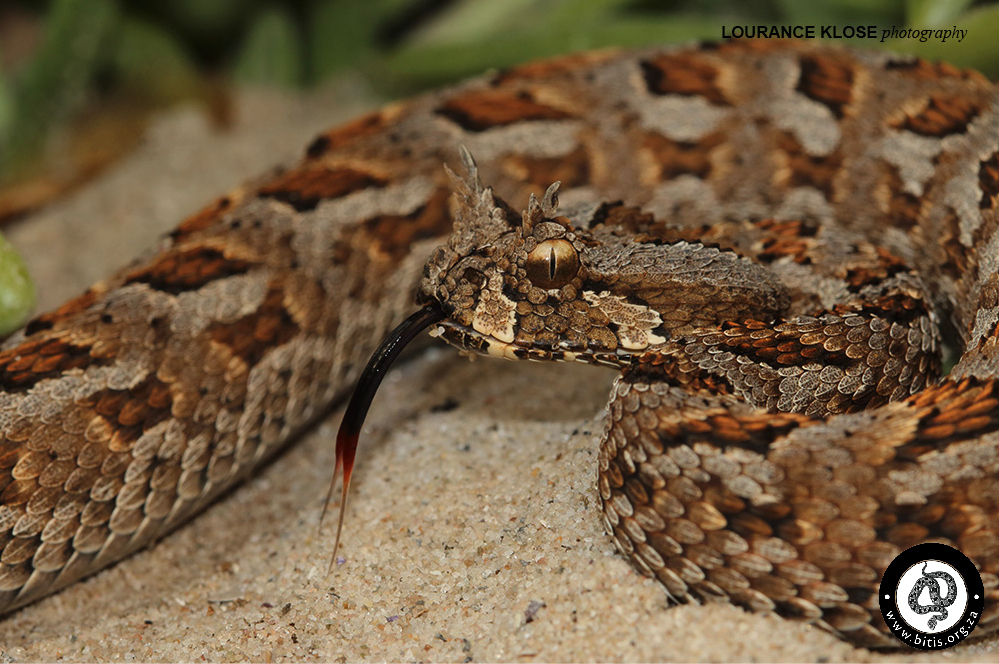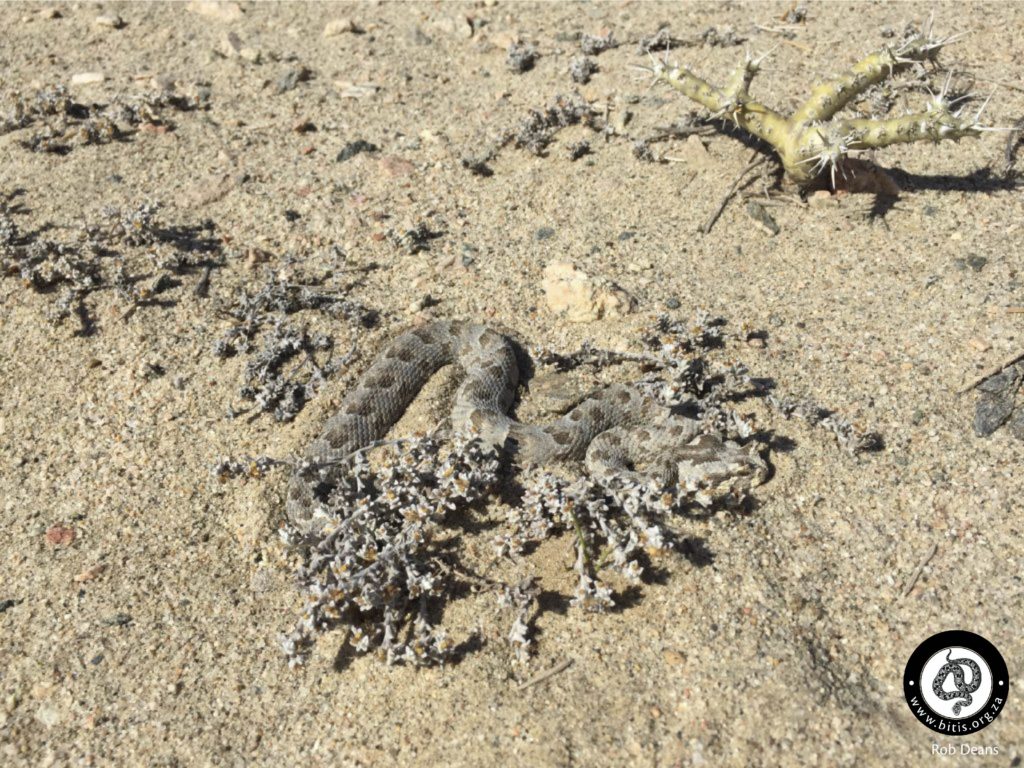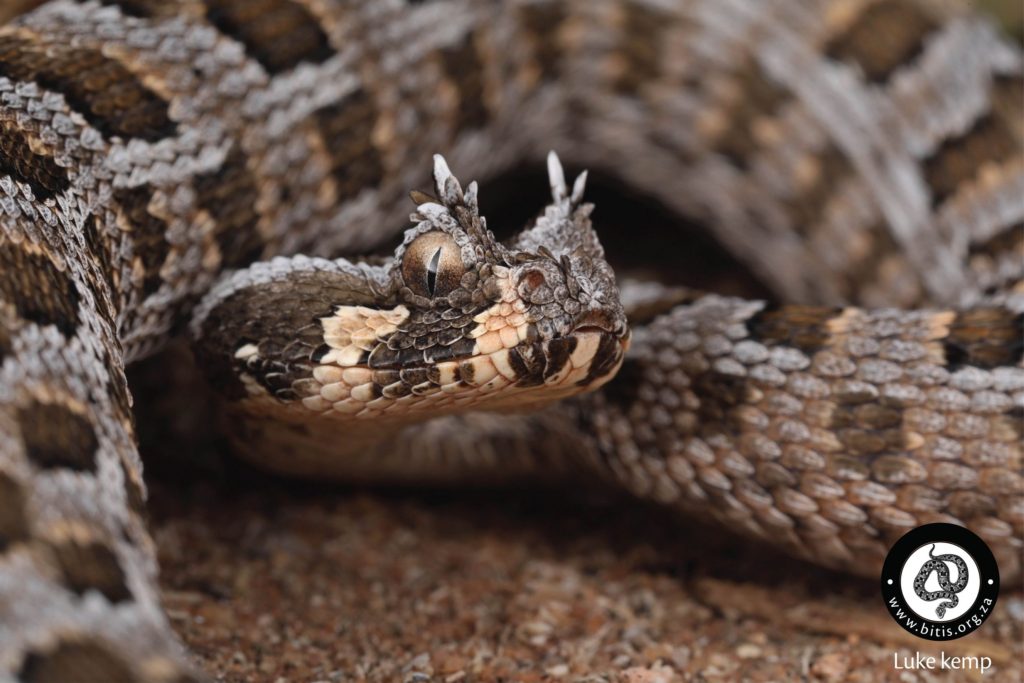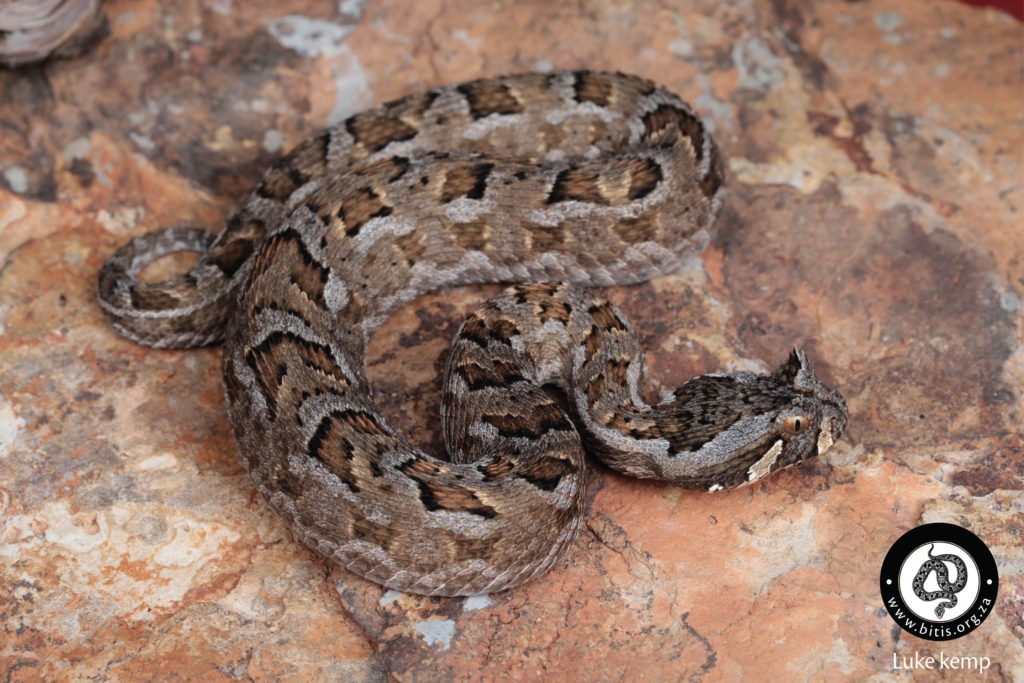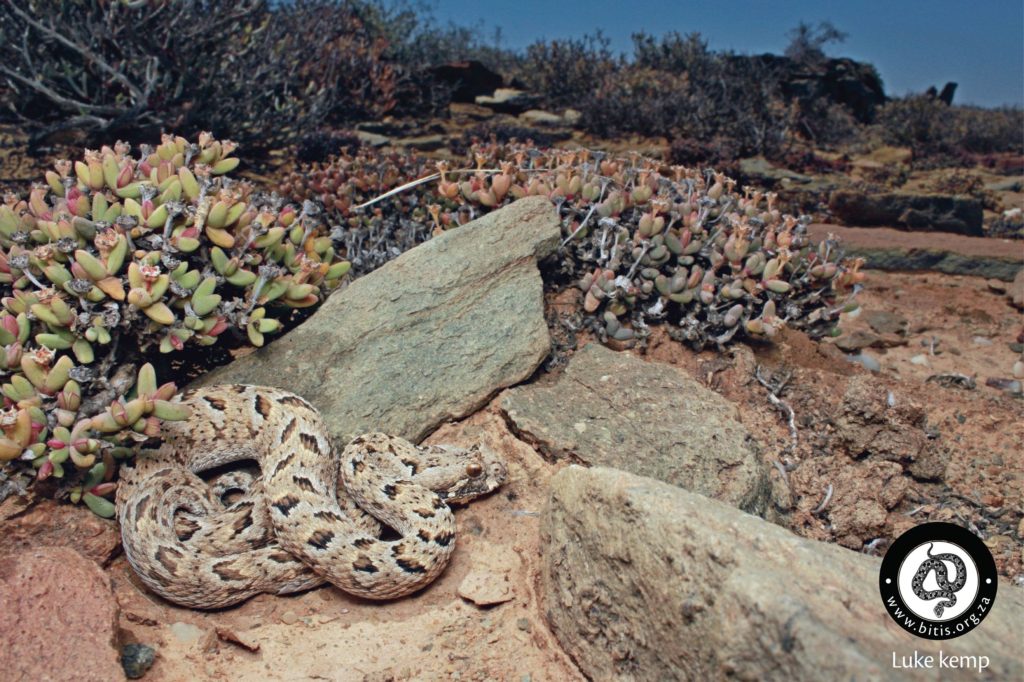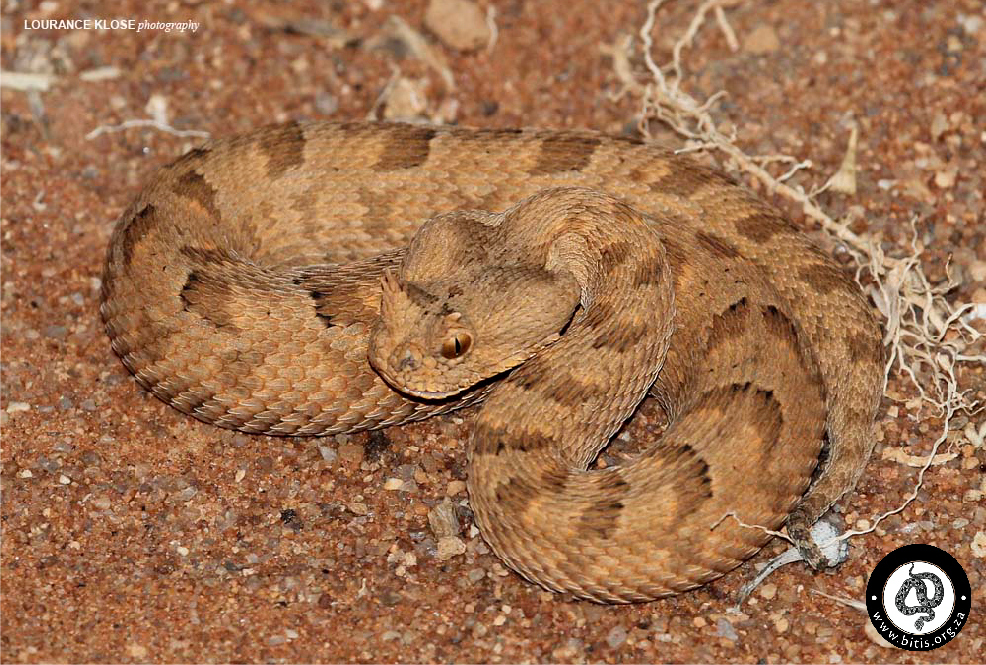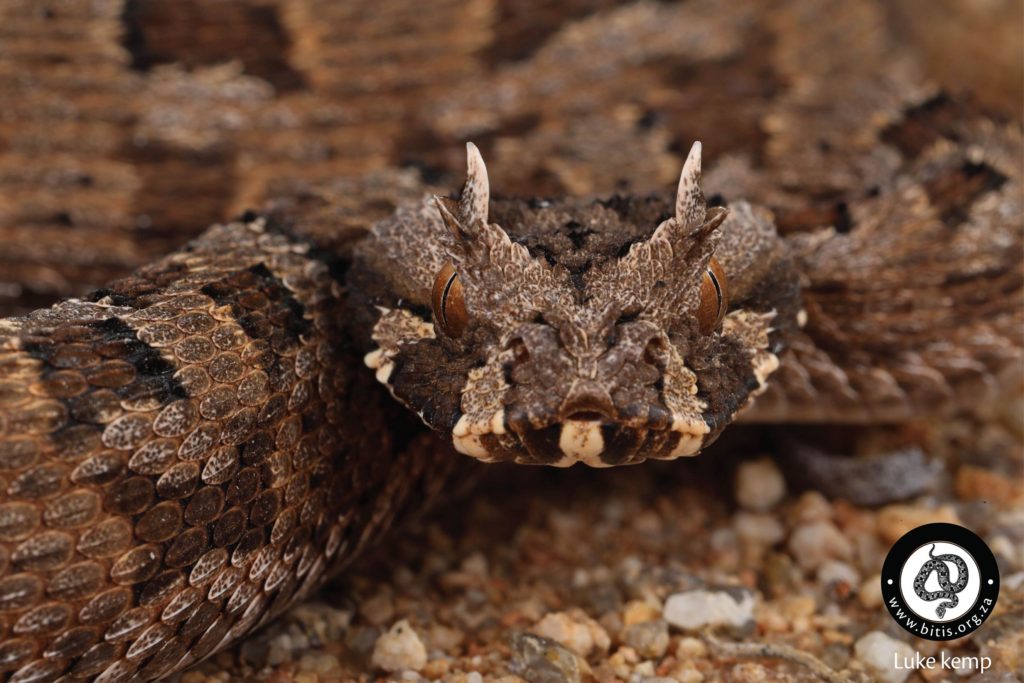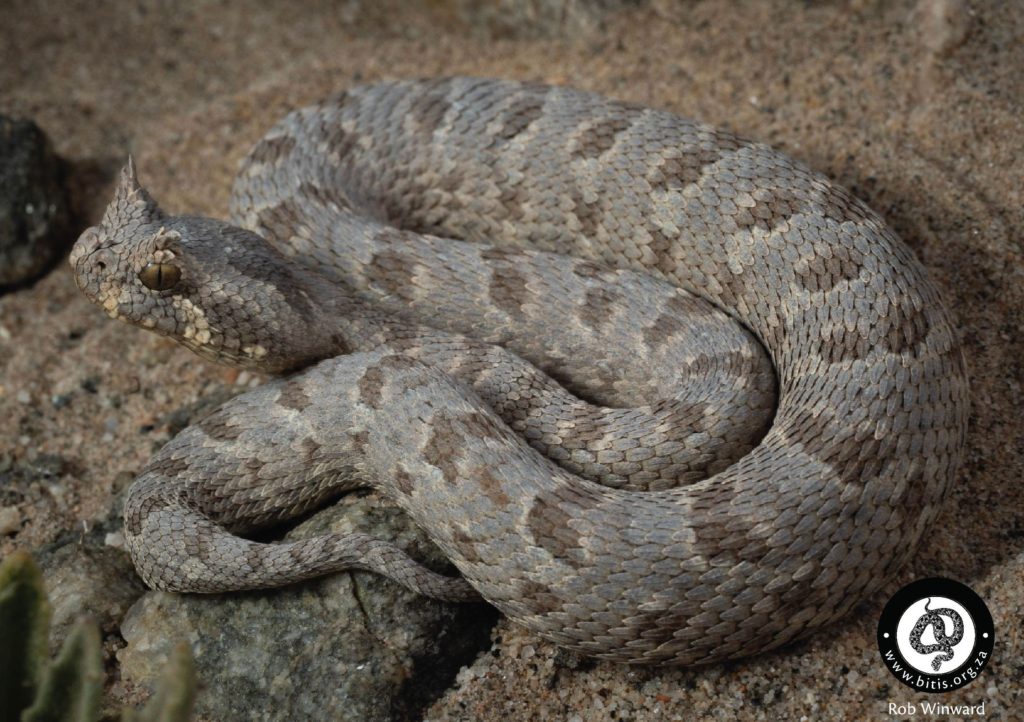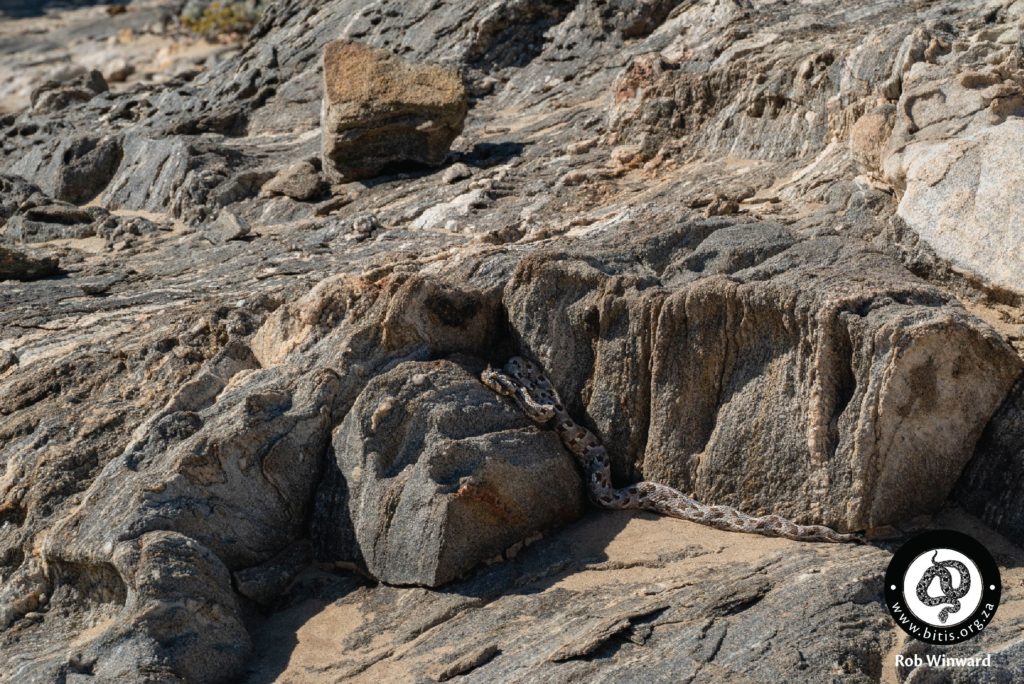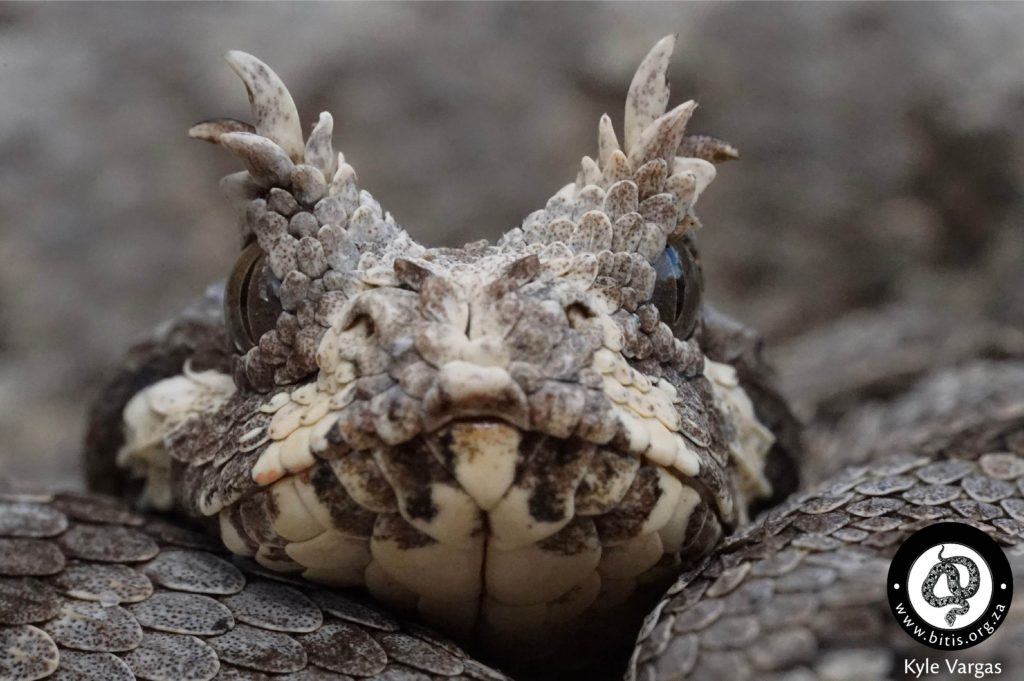Many Horned Adder (Bitis cornuta)
Previous names
Vipera cornuta – Daudin 1803
Vipera lophophris – Cuvier 1829
Cerastes cornuta — GRAY 1842
Clotho cornuta — GRAY 1849
Cerastes lophophrys — Duméril and Bibron 1854
Bitis cornuta — Boulenger 1896
Cobra cornuta — Mertens 1937
Bitis cornuta cornuta — Bogert 1940
Bitis (Calechidna) cornuta — LENK et al. 1999
Bitis cornuta — BRANCH 1999
Holotype – no holotype as Daudin (and Cuvier) based the description off a drawing by Paterson, W. plate 15 in his “Narrative of four journeys into the country of the Hottentots and Caffraria in the years 1777 – 1779.” No neotypes exist, but specimens from Port Nolloth, South Africa, are considered topotypes.
Etymology – Cornuta translates from latin to horns and refers to the erected scales above each eye of the snake.
Species history – Described by Daudin in 1803 from drawings by Paterson after his voyage into the western regions of Southern Africa. Cuvier described the same animal (also from Paterson’s drawings) in 1829 calling it Vipera lophophris (Lophos – crest)
Description – Primary distinguishing feature is a tuft of horns above each eye. On top of the head is a blunt arrowhead flanked by a thick grey border on each side. Cheeks black with a cream coloured vertical stripe either side of the eye.
Base colour is usually sandy brown or grey. Dorsal patterning is made up by an average of 24 rows of black rhomboid shapes flanking the spine, these usually have a white or grey stripe below and may have yellow/gold edging. Specimens from southern Namibia have a much higher saddle count.
Some individuals may be red-brown or brown in colour. Coastal forms in Namibia occur in white sandy habitat and present in a washed out “ghost” form.
Natural habits – An arid region specialist, usually associated with rocky outcrops, but comfortable in sand dunes around Port Nolloth and into the skeleton coast of Namibia. Despite literature records, this species is probably absent from the Cederberg and historic records from De Hoop Nature Reserve, Western Cape are misidentifications of Bitis armata. The Cederberg animals are more likely to be Bitis rubida that have been confused for Bitis cornuta. Bitis cornuta is usually found within 200 km of the west coast of Southern Africa

